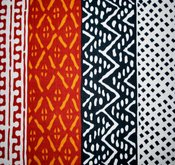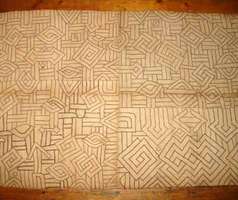|
African currency were objects used to trade for goods, services and to measure wealth.
African currency, before colonization by Europeans, was mainly in the form of objects that were considered valuable by the African people. Such objects or items included beads , kola nuts, cowrie shells textiles , salt and most of all metals. African currency were traded in various forms. In the case of cowrie shells, they were used for everyday transactions and also gathered in large quantities to be given as gifts to a bride's family from the groom. They were also considered to possess the power of fertility, thereby making them widely used throughout Africa. Textiles were also commonly used as currency in Africa. Cotton or raffia cloths were used as gifts, payments to sons from their fathers when they grow into adulthood, payment for goods and services and with other forms of currency to add flexibility to various business or tribal negotiations such as peace offerings. However, the most traded form of African currency was Iron because of the demand for it and the fact that it was the most useful form of metal. In Sierra Leone, Iron bars called Barriferri were used to trade slaves. One slave was worth about 150 iron bars.
In other areas, Iron was traded as currency in different forms. In Zaire, they were traded as hoes. Along the Ubangi river, they used iron bells as their form of currency. Among the Guro of the Ivory Coast, long iron bars with wing like ends called Sompe were used for trading and making payments for goods and services. When it came down to African currencies having the most artistic value, bracelets, collars and silver and gold earrings come to mind. Married fulani women of Mali wore large earrings called Kwottenai. These are given to wives from their husbands or to daughters from their mothers. The larger these earrings, the wealthier the family. In Zaire the Dengese, Sungo-Meno and Kela tribes made metal blades that were originally a sign of social status. These blades gradually became a form of currency that were used in trade. Eventually, because such practical everyday objects, like the hoe, were now being used as money and being valuable, they would ultimately lose their original meanings. They were now being made as variations of their original selves. In Tanzania for example, the hoe was completely flattened to give it a more simpler look and could now be admired in its pure form as currency and not be confused with the original hoe which still served its practical function as a tool. Today, most of these objects that were being used as currency in the past, are collected as forms of art. |

